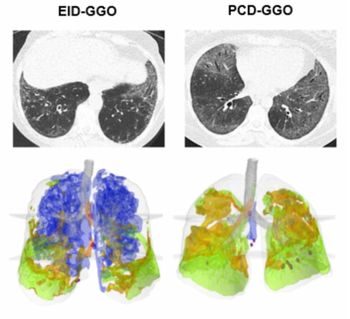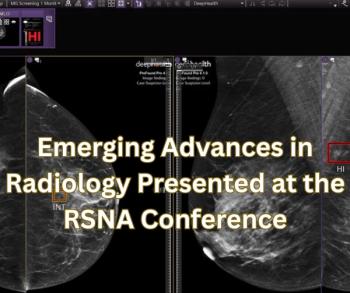The Overabundance of Variables in Radiology
The unforeseen impact of multiple variables has a way of wrecking any formal analysis of different compensation offers in radiology.
My first semester of college threw a curve ball at me. One of the classes for which I had registered fell through and after a semi-frantic scramble, I found myself in a philosophy course on metaphysics. About half the class consisted of grad students and I hoped I wasn’t in way over my head.
It turned out to be a great experience, putting concepts in my head that might otherwise never have gotten there. One particularly sticky one was determinism. I will spare a treatise on the matter here but once you grasp it, it is hard to still believe in things like randomness.
Here is a super simplistic example: Suppose you have a completely fair coin or a die. Heads or tails each have a 50 percent chance of happening, and rolling any particular number from 1 through 6 has a 16 to 17 percent chance. It’s a random outcome, right?
Not so much. If you were in an advanced science lab that could measure everything inside of it, the instruments could figure every bit of physical influence your hand exerted on the coin/die as you tossed it. They could measure air currents and even the subtle influence of electromagnetic forces. There is no randomness in physics. The trajectory of the toss could be calculated and the outcome known every time.
In the real world, we never know all the variables. Accordingly, we call things whose outcomes we can’t predict “random” and consider it close enough.
That doesn’t stop us from trying to assess as many variables as we can. If we can make predictions that pan out often enough, it can keep us ahead of the other person or at least ahead of where we would be otherwise.
One area I have talked about in this blog is my work as a per-click teleradiologist. Unlike a salaried job, where you know what your paychecks are going to be, a per-click gig has variability based on how much work you do. You have a certain amount of control over that variability, and there are some things you can do to increase that control, but it is never absolute.
When I was sizing up my departure from a salaried onsite gig to my first telerad work, I tried coming to grips with as many variables as I could. I looked at the average number of cases I did in particular intervals of time. I even tried to isolate hours or fractions thereof when I didn’t get interrupted for many phone calls, IV contrast injections, fluoro, etc. Such things wouldn’t, after all, be a factor when I was working from home.
As the saying goes, we make our plans and God laughs at them or, per Mike Tyson, “Everybody has a plan until they get punched in the mouth.” Variables I hadn’t imagined came out of the woodwork to mess with my projections. Things I considered constants turned out to be variables. Some of these factors were good, some were bad, but all of them messed with my predictions.
One of the very first variables was an issue before I even began my telerad work. It was a bad time in the job market and reimbursements were dropping all over the place. In the interval between signing my contract and reading my first case, the per-RVU payment value got ratcheted down. I had considered that a constant but this variability meant I would either have to read more or earn less.
At times, it seemed like every negative variable came hand-in-hand with a positive one, and I considered myself Seinfeld’s “Even Steven” for a bit. Fortunately, the good stuff rapidly outweighed the bad. It turned out I had greatly underestimated how much more productive I would be without all of the distractions in my on-site job. Superior voice recognition software and various other efficient tools supplied by the telerad company also kicked in. In short order, I was reading more cases than I had ever thought possible.
Fast forward seven years when the job market had come roaring back and there were better telerad gigs beckoning me. I thought for sure I had made a brilliant study of all of the variables impacting my productivity as an independent contractor telerad. I even had spreadsheets showing my capabilities. Here is how much I can do if you feed me a bunch of XR. Here is what happens if you give me more cross-sectional imaging, etc.
Once again, I was inaccurate about certain variables and completely blind to others. I didn’t fully appreciate, for example, what would happen when I lost some of the efficiency tools from the telerad company I left. It didn’t occur to me how clunky some of the software that other telerad outfits used would turn out to be. I was almost entirely blindsided by how some of them manipulated worklists to sandbag telerads like me in favor of their own on-site people.
I concluded that there is almost no reliable comparison of the two different working situations. I will do my best to identify all of the variables I possibly can of course. Instead of thinking I have got a decent chance of hitting the bullseye on my prediction dartboard, I should probably be thinking in terms of hitting the dartboard at all and doing subsequent course correction.
Even when it seems no variables could possibly shift — for instance, I enter my 23rd month of working for a given telerad gig— fate has a way of stirring things up. For instance, as the individual working from home, I am the one who gets to deal with things like letting pooches out in the yard (and chasing them across the neighborhood when they find a new hole in the fence).
Newsletter
Stay at the forefront of radiology with the Diagnostic Imaging newsletter, delivering the latest news, clinical insights, and imaging advancements for today’s radiologists.





























